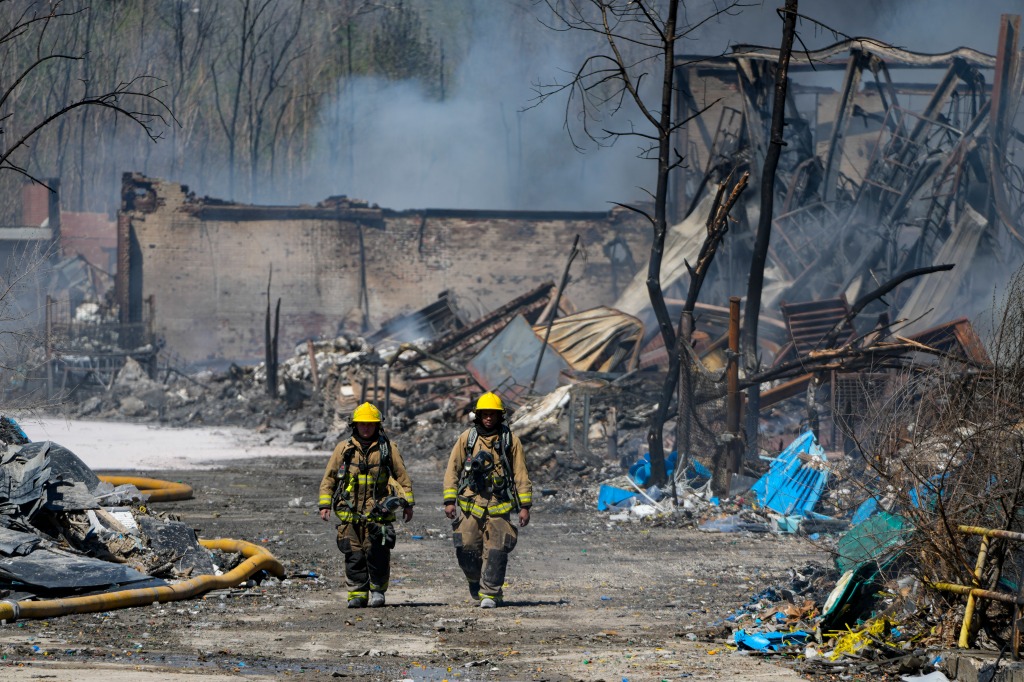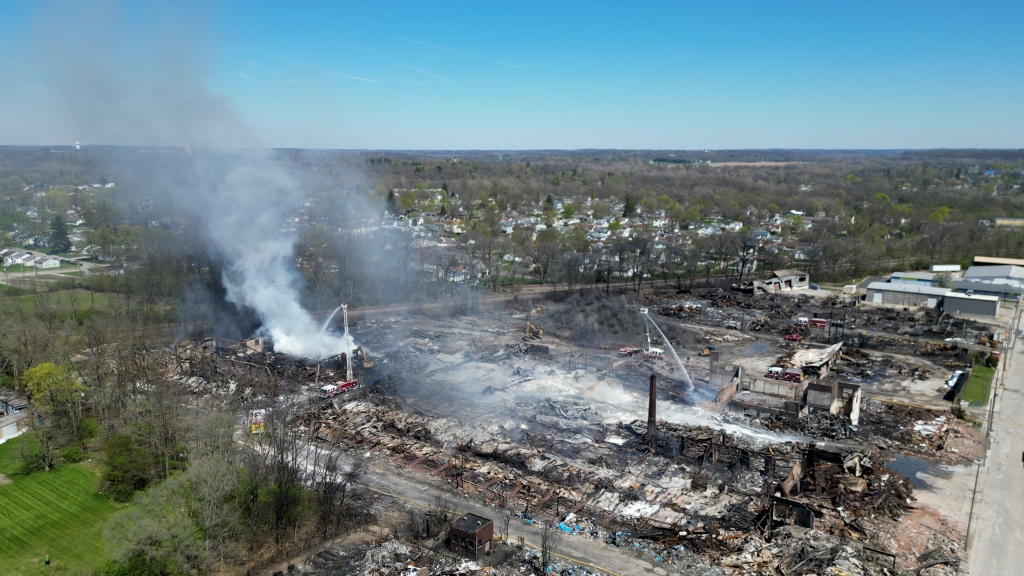Still-smoldering Indiana recycling plant fire spewing asbestos, other toxins: EPA
The still-smoldering fire at an Indiana recycling plant that triggered a massive evacuation is spewing carcinogens more than a mile away, officials said Friday.
The Environmental Protection Agency said it found samples of “asbestos-containing” debris that was ejected about a mile-and-a-half from the Richmond recycling plant, where an inferno has been burning since Tuesday.
The evacuation order that forced 2,000 residents to flee their homes is still in effect as federal, state and local agencies develop plans to deal with the cancer-causing fragments in nearby neighborhoods.
“Probably the worst thing you can do if you have debris in your yard would be to mow and break up that material” and inhale it, EPA on-scene coordinator Jason Sewell said.
Hydrogen cyanide, benzene, chlorine, carbon monoxide and volatile organic compounds have also been detected in the evacuation zone.
The plastic recycling plant caught fire Tuesday afternoon, sending heavy dark plumes of smoke — that experts immediately warned to be “toxic” — billowing through the city of 35,000.
Factory owner Seth Smith was barred from accepting more plastic scrap materials in 2020 because he did not have an appropriate number of fire sprinklers for the highly flammable materials that he packed “wall to wall,” among other city inspection violations.
He had also been previously issued a citation for unsafely stacking the plastics.
Smith, however, was still permitted to maintain his colossal pile of materials inside six separate buildings on the 14-acre site, officials said.
The exact cause of the blaze is still under investigation.
The fire was extinguished Thursday night, 48 hours after it was sparked.


“Because of the nature of the fire and the material it has burned, it is expected to continue smoldering and producing smoke, soot or burnt plastic smell for several more days,” the Richmond Fire Department said.
The full impact of the inferno is yet to be determined — EPA officials are continuing to monitor air and water contamination, as well as submit samples to the lab for analysis.
With Post wires
Read the full article Here


